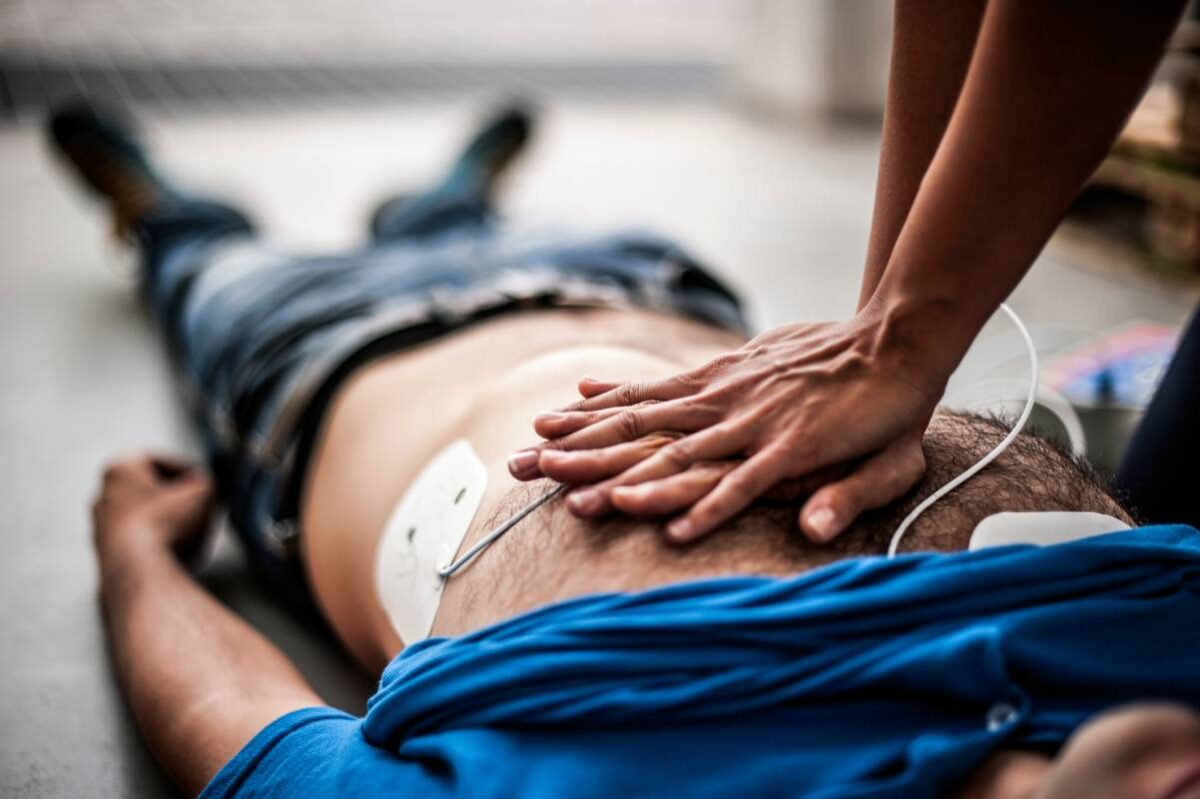How Cardiopulmonary Resuscitation (CPR) Works

Cardiopulmonary resuscitation (CPR) is a series of lifesaving actions to maintain breathing and blood flow in a person who experiences cardiac or respiratory arrest [1]. It involves manual application of chest compressions and breaths to those in cardiopulmonary arrest and is often conducted to maintain viability in an emergency until help arrives or more comprehensive interventions are accessible [1]. Though certain groups of professionals are trained to perform CPR, the average person can also become certified. In response to guidelines from the American Heart Association, CPR training programs have been implemented nationwide in recent years [2]. It has been found that community CPR training programs save 24 to 56 lives per 100,000 adults every year [2]. Therefore, the quick recognition of cardiopulmonary arrest and early initiation of CPR is critical to preventing loss of life [2].
The first step to successful CPR is to check the scene for safety and form a quick assessment of the surroundings [3]. If a person appears unresponsive, check for signs of life such as eye movements, breathing, and pulse [3]. The “shout-tap-shout” method can be used to assess a person’s responsiveness – in which the responder assesses whether the person responds to sound or touch stimulus [3]. Other signs of a person who may be in need of CPR include gasping and seizure activity [4]. If the person is unresponsive or showing other signs of cardiopulmonary arrest, the next step is to call for help [3]. The first responder to the scene should alert nearby people to the emergency, call 9-1-1, and ask for equipment such as an AED [3]. Before starting CPR, the person should be placed on their back on a firm, flat surface if possible [3]. Chest compressions can then begin at a rate of 100 to 120 per minute, alternating between 30 chest compressions and administering 2 breaths of air [3]. To provide breaths, tilt the head backward and lift the chin [3]. Each breath should last about one second and cause the chest wall to rise [3]. Allow the chest to relax before administering the second breath [3].
The American Heart Association and the American Red Cross recommend different CPR compression techniques for infants, children, and adults [2]. For an infant, chest compressions are completed by placing two fingers of one hand over the lower half of the infant’s sternum (slightly below the nipple line) and depressing the chest inward about 0.5 to 1 inch with each compression [2]. For a child aged 1 to 8 years, chest compressions are delivered by placing the heel of one hand over the lower half of the sternum and depressing 1 to 1.5 inches per compression. For people aged 8 years and older, the standard CPR resuscitation technique is used [2]. Both hands are centered on the chest, with shoulders directly over hands and elbows locked [3]. The depth of each compression should be at least 2 inches, allowing for the chest wall to return to normal position after each compression [3].
When available, an automated external defibrillator (AED) should be incorporated into the CPR effort [1]. AEDs play an important role in the resuscitation of those with dangerously abnormal heart rhythms, such as ventricular fibrillation or pulseless ventricular tachycardia, by monitoring the heart rhythm and administering an electric shock if needed that can aid in restoring a normal rhythm and spontaneous blood circulation [1]. AEDs may be found in certain public areas, such as hospitals, airports, and some commercial spaces [4]. When making the decision to initiate CPR, it is best to ask fellow bystanders to assist with locating a nearby AED so that compressions can begin without delay [4].
The key to success for CPR resuscitation is “early-early-early,” meaning early recognition, early chest compressions, and early defibrillation [4]. Appropriate early intervention increases the chance of resuscitation, and earlier return of spontaneous blood circulation improves long-term outcome for the patient [4]. Many organizations offer classes that the average person can take to become trained and certified.
References
- Bhatnagar, V., Jinjil, K., Dwivedi, D., Verma, R., & Tandon, U. (2018). Cardiopulmonary resuscitation: unusual techniques for unusual situations. Journal of emergencies, trauma, and shock, 11(1), 31. doi:10.4103/JETS.JETS_58_17
- Wang, J., Ma, L., & Lu, Y. (2015). Strategy analysis of cardiopulmonary resuscitation training in the community. Journal of thoracic disease, 7(7), E160–E165. doi:10.3978/j.issn.2072-1439.2015.06.09
- The American Red Cross. (n.d.). CPR steps: Perform CPR. Red Cross. Retrieved from https://www.redcross.org/take-a-class/cpr/performing-cpr/cpr-steps
- Truong, H., Low, L. S., & Kern, K. (2015). Current approaches to cardiopulmonary resuscitation. Current problems in cardiology, 40(7), 275-313. doi:10.1016/j.cpcardiol.2015.01.007